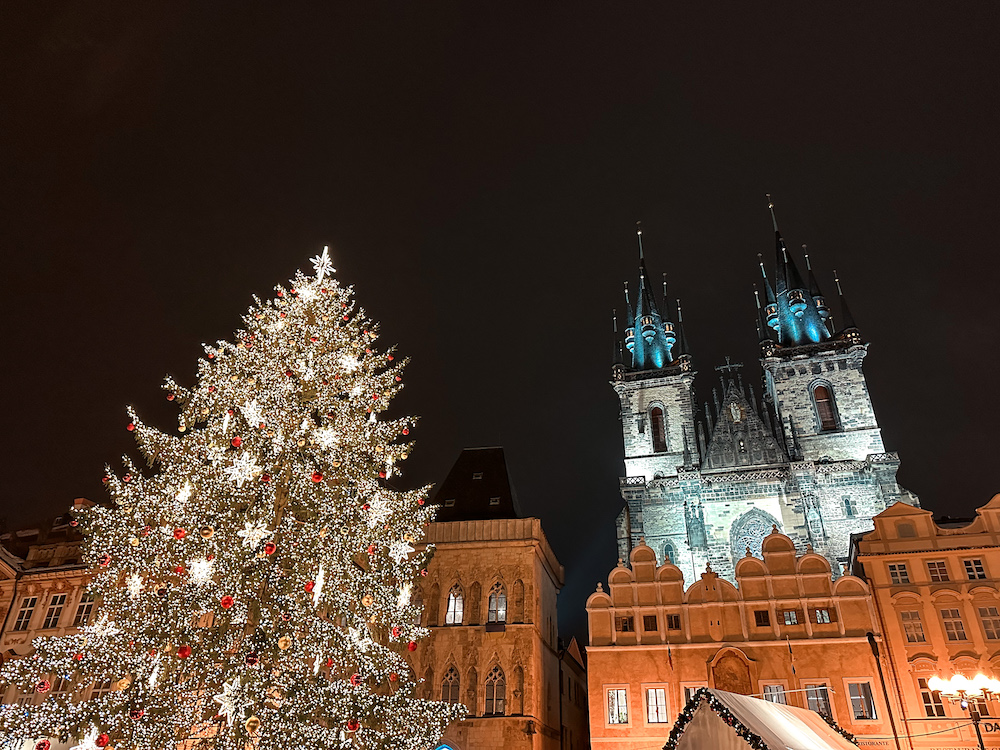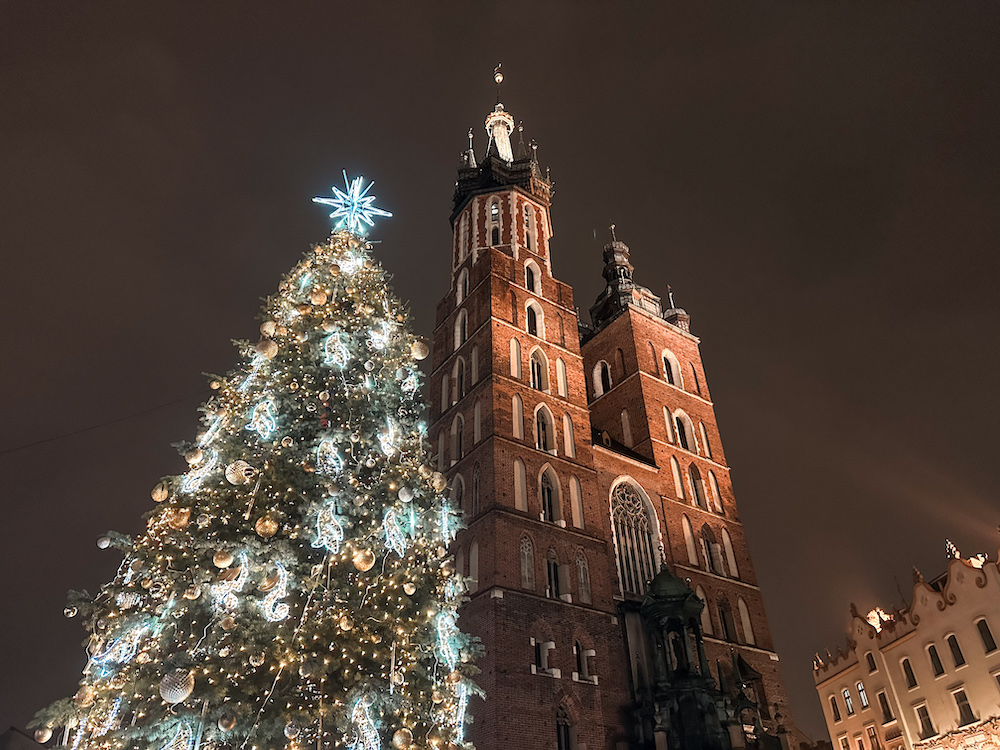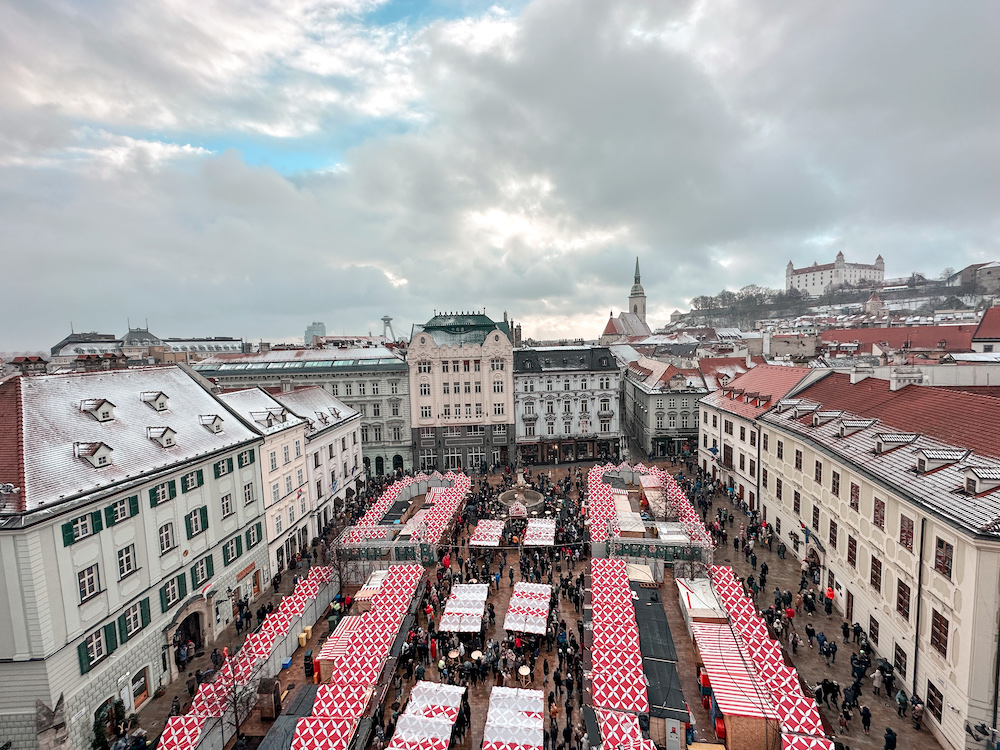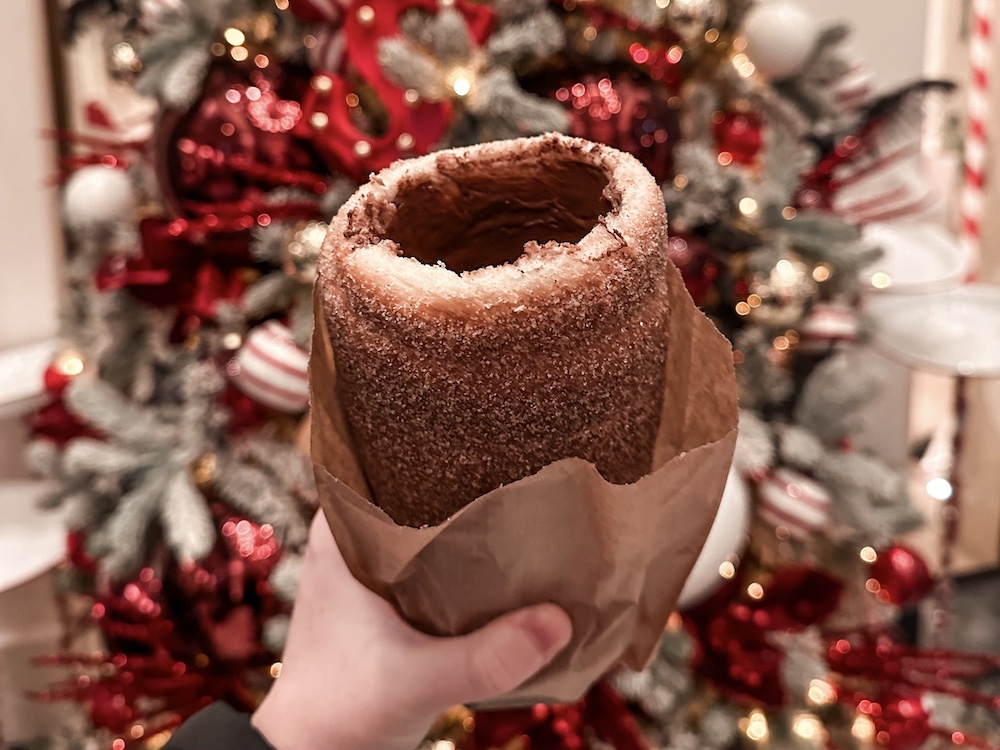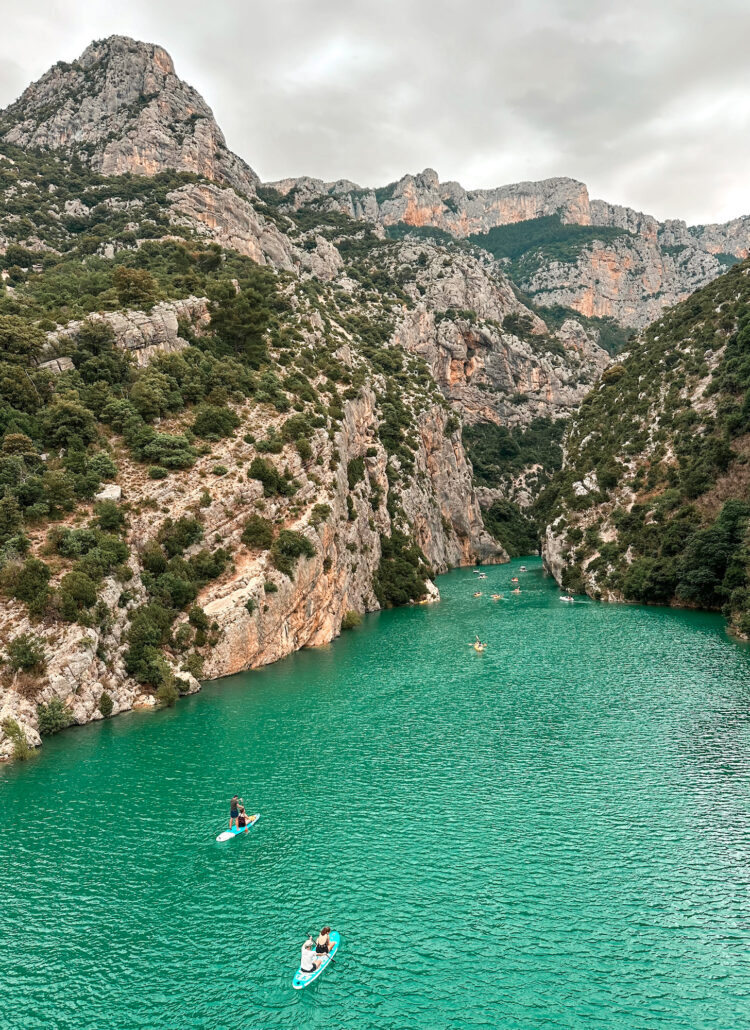Tips for Visiting European Christmas Markets
Are you looking for tips for visiting European Christmas markets?
Visiting the Christmas markets of Europe is a bucket list experience for many travelers. It was something I had always wanted to do, and I finally got the chance to experience it last winter.
During a two-month trip to Europe that took us to ten different countries, my mom and I spent a full month visiting Christmas markets in Austria, Slovakia, Hungary, the Czech Republic, and Poland.
It was a magical experience and one I’m definitely eager to repeat again!
After spending so much time visiting many different Christmas markets, these are the top tips I picked up along the way. Be sure to read these tips before planning a Christmas market trip of your own!
1. Determine your route.
There are Christmas markets all over Europe, so you’ll want to determine which region to focus on for your trip. I spent a full month in five different countries, but I recognize that most travelers don’t have that much time. The majority of travelers will have one or two weeks to spend in Europe for Christmas markets.
In that case, I recommend focusing on one to three different countries.
You could easily spend a full week just doing German Christmas markets, for example. Or you could combine Germany with the Alsace region of France. Alternatively, you could do Switzerland and the Alsace. Or do Vienna, Bratislava, and Prague. Or spend a full week in Poland. The options are endless!
Spend some time planning your route and be careful not to cram too much in. I prefer staying in one city for several nights (and taking a day trip or two) instead of hopping to a new destination every night.
2. Figure out your travel style.
Are you more of a budget traveler? If so, I’d recommend destinations like Poland, the Czech Republic, and Hungary, which are a lot more affordable than somewhere like Switzerland, the most expensive country in the world! France, Germany, and Austria are also going to be pricier destinations overall.
You should also figure out how you want to travel. For the trip my mom and I took, we traveled by train between most destinations, and occasionally by bus. We stayed in hotels for three or four nights per city. We did not rent a car and only relied on public transportation or tours for our day trips.
This worked well for us, but I understand not everyone wants to organize the logistics of travel. Another option is taking a Christmas market river cruise. These are very popular because you can visit multiple destinations with ease and you don’t have to worry about any of the logistics yourself.
River cruises are a lot different than traditional ocean cruises. The ships are much smaller, and you’ll be sailing down rivers like the Danube, the Rhine, the Elbe, and the Seine, stopping in the heart of large cities and small towns and visiting some of the most beautiful Christmas markets in Europe.
Cruise lines like Viking, AmaWaterways, and Avalon all offer Christmas market cruises in Europe.
3. Research opening dates and times.
Every Christmas market has different opening dates and times, and they can change from year to year, so it’s important to research the specifics of the destinations you’re visiting before you go.
Some Christmas markets open the last week of November, but others don’t open until the beginning of December. Many people are surprised to learn that almost all European Christmas markets close a day or two before Christmas, and they are not open during the week after Christmas.
Smaller Christmas markets might have even more limited dates or only be open on weekends.
When it comes to opening times, most markets open in the late morning (around 11 AM) and close fairly early in the evening (7 PM or 8 PM is a common closing time for many European Christmas markets.)
4. Visit earlier in the season for fewer crowds.
It’s hard to avoid the crowds entirely, but one thing I noticed on my month-long Christmas market trip was that crowds were much lower in late November and early December.
If you want to enjoy the Christmas markets with fewer crowds, try to time your trip to take place earlier in the season, since crowds only increase in the weeks leading up to Christmas.
5. Weekdays are also less crowded.
Aside from visiting earlier in the season, there’s another big thing you can do to avoid crowds, and that is visiting the Christmas markets on weekdays, especially weekday afternoons whenever possible.
Weekends are much more crowded with tourists coming from near and far. But weekdays can be quieter, especially if you go in the afternoon. Although the ambiance is not quite the same compared to nighttime, it’s still fun to visit Christmas markets during the day. It also tends to get dark between 4 PM and 5 PM.
I did notice that weekday evenings can be crowded because many locals come to Christmas markets after work to hang out with friends and essentially enjoy a happy hour at the markets.
6. Dress in warm layers.
Dressing warmly and wearing layers is extremely important at Christmas markets in Europe! It was very cold on my trip last winter and for many of the days, it was snowing or raining icy cold rain.
I highly recommend packing a long, warm winter coat that is water-resistant and has a hood. Puffy down jackets are a good option for staying warm. I also recommend packing an umbrella.
Layering up is also a smart idea. On days when it was really cold outside, I wore a thermal base layer and a heavy sweater under my winter coat, warm leggings, a thick pair of socks, and gloves.
The more layers you wear, the better! You can also remove a layer if you start to get warm, but you’ll regret it if you aren’t wearing enough layers and end up walking around feeling too cold.
7. Wear proper footwear.
Similar to the tip above, make sure you have proper footwear. You’ll be doing a lot of walking, and in many destinations, the ground can be slippery or icy if it has been raining or snowing.
At first I was wearing sneakers on my trip, but I ended up buying a cute pair of short back waterproof Ugg boots (sadly, it looks like they discontinued the exact style I go) to be better equipped for the weather. These boots ended up being really comfortable to walk around in and they were super warm.
I definitely recommend wearing waterproof winter boots for the Christmas markets.
8. Bring plenty of cash.
Some Christmas market stalls are cash only, so you definitely want to come to the markets prepared with plenty of cash. Especially if you’re buying any beverage like mulled wine or hot cider in a mug — you’ll be required to pay a deposit of a few euros for the mug, which needs to be paid in cash if you want it back!
Even in destinations where paying with card is the norm, you might be surprised at how many Christmas market stalls only take cash. That being said, there are a few cashless Christmas markets in Europe too, so you’ll want to do your research before you go to know exactly what to expect.
The best way to take out cash in Europe is by ATM — you get a better exchange rate than you would at a money changing booth or by exchanging currency at your home back. For American travelers, I highly recommend the Charles Schwab Investor Checking debit card, which has no foreign transaction fees and automatically refunds any ATM fees you might incur from using any ATM around the world.
If you’ll be visiting different countries with different currencies, be sure not to take out too much cash, or else you might be stuck with leftover money before heading to your next destination.
9. Come hungry to the markets.
Eating and drinking are some of the best things to do at European Christmas markets! Many of the stalls at the markets are food and drink stalls, so you’ll want to arrive hungry. You can easily eat your way through a Christmas market instead of sitting down at a restaurant for a proper lunch or dinner.
Take some time to research the specialties in the destinations you’ll be visiting.
Every country is different, and there are many regional differences within countries too. Pretzels in Germany, raclette in France, chimney cakes in Hungary, pierogi in Poland… the list goes on!
10. Mugs are one of the best souvenirs.
Another big draw to Christmas markets is the shopping. Christmas markets are a great place to shop for unique souvenirs and holiday gifts. But one of the best (and cheapest) souvenirs is mugs!
These are most common at the markets in Germany, Austria, and France. Whenever you get a hot beverage, you’ll pay a deposit (usually just a few euros) for the mug it’s served in. You can return the mug to get your deposit back, or you can keep it. And these aren’t just your average plain coffee mugs!
The mugs are decorated uniquely for each Christmas market, so it can be fun to collect them if you visit Christmas markets in multiple destinations. And for just a few euros, they’re a cheap souvenir!
11. Many cities have multiple markets.
Finally, one last thing that’s important to know is that many cities have multiple markets.
While smaller towns might just have one market in the town’s central square, larger towns and cities often have several markets. So don’t miss out by thinking the main market is the only one to visit!
Often, the smaller markets are less crowded or have a unique theme.
Tips for Visiting European Christmas Markets
These are my top tips for visiting European Christmas markets.
While Christmas markets are a fun, festive, and magical experience, knowing these tips before you go will help you be more prepared and have an even better time on your Christmas trip.
Enjoy your visit to the Christmas markets!
Related Guides:
- Travel Essentials for Europe: 11 Things You Must Have
- 12 Best Hotels in Salzburg, Austria (For Every Budget)
- 8 Best Luxury Hotels in Vienna, Austria
- 10 Best Hotels in Bratislava, Slovakia
- 7 Best Luxury Hotels in Budapest, Hungary
- Where to Stay in Warsaw, Poland (For Every Budget)
- Where to Stay in Krakow, Poland
- 11 Best Hotels in Wroclaw, Poland: Top Places to Stay
